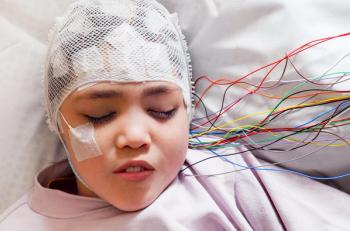
Visually oriented social media platforms created by their peers can have a significant negative impact on adolescents’ body image.

Visually oriented social media platforms created by their peers can have a significant negative impact on adolescents’ body image.

For the first time in a decade, there are antibiotics newly approved for use in children with skin and skin structure infections that do not respond to conventional treatment.

Early detection of hearing status in children is critical to prevent the significant detrimental effect on cognitive development it can have if not appropriately addressed.

What causes chest pain and syncope in children and adolescents, and how can pediatricians recognize and eliminate the causes that may lead to significant morbidity or even death?

Pediatricians are the frontline providers for identifying neurologic problems in neonates and infants.

Because the burden of atopic dermatitis in children is significant and can adversely impact a child’s normal socialization development, accurate diagnosis and effective treatment are vital.

Education for pediatricians about vascular anomalies primarily focuses on cutaneous malformations and vascular tumors, but vascular anomalies also affect deeper tissues and organs.

Opioids have impacted every population served by all healthcare providers in the United States and by now every nurse practitioner (NP) has been exposed to the opioid scourge. Perhaps it’s time to reassess the role for NPs in caring for their individual populations confronting an opioid crisis.

A common problem in young children, ear infections often are the subject of debate when it comes to management techniques.

There are challenges to defining normal or healthy levels of vitamin D. The question, therefore, is whether to recommend vitamin D supplementation for breastfeeding mothers, their breastfed infants, or both.

More and more parents are using herbal medications to manage their children’s health conditions, but which ones are safe and how are they used?

Despite recommendations from federal overseers that universal autism screening has little benefit, experts in autism remain steadfast in their belief that early screening and intervention improves outcomes.

Obesity can be a difficult-and costly-issue to manage, but there is new evidence to help make interventions to fight obesity more effective and less expensive.

When is a spot not just a spot? Children can sprout a variety of discolorations, and it takes a trained eye to know when to investigate further.

It’s important to stay up-to-date on the latest news about vaccines, particularly when so many parents today are questioning the safety and necessity of vaccinations.

It’s no secret that babies love to look at their parents’ faces and hear their voices, but pediatricians are now being challenged to help parents understand that what they say to their children in the first years of their life can have a lasting effect on their brain development and scholastic achievement.

Every pediatrician has experience with influenza and respiratory syncytial virus (RSV), but there are still many cases in which these illnesses are misdiagnosed or mismanaged.

When it comes to setting the tone for wellness, health promotion, and disease prevention, Bright Futures is a valuable resource for both clinicians and families.

While tuberculosis is not something all pediatricians see in daily practice, it remains a threat in some populations, and pediatricians should be aware of the risk factors and diagnostic recommendations.

Although pediatricians should no longer be routinely performing universal urine screenings in children, there are times that urinalysis is performed and abnormal results are found.

Guns already contribute to too many injuries and deaths among teenagers, and a recent report suggests that adolescents who are bullied at school might be more likely to access a loaded gun than their peers.

One in 10 children and teens are using complementary medicine, but they and their parents seldom include pediatricians in their plans. A new report offers guidance on complementary therapies and how to talk to clients about them.

The staff of Contemporary Pediatrics is all packed and ready to depart for the American Academy of Pediatrics National Conference & Exhibition in Chicago, Illinois, September 15- 19. While there, we’ll be bringing you daily reports on sessions of value to your practice.

Breastfeeding is already known to offer a number of health and developmental benefits. Now, an Australian study is adding ear infection prevention to that list.

Pediatricians may want to consider taking a look inside the mouth of a child with recurrent acute otitis media. A new study from Italy reveals that repairing dental malocclusion may have positive effects on a child’s eustachian tube function and the number of episodes of acute otitis media (AOM) they have.

For whatever reasons, uptake of the human papillomavirus (HPV) vaccine in the teenaged years is mediocre, but do the college years offer new opportunities for healthcare providers to encourage the vaccine? Maybe not, according to a new study.

Compliance with recommended immunizations among adolescents is not the best, but what may be more startling is the fact that most parents don't even realize that their child is missing vaccines.

For Contemporary Pediatrics, Dr Bobby Lazzara discusses a large study published in Pediatrics that examined what happened when children were nonsurgically managed for appendicitis, often with antibiotics, and compared the results with their peers who had received surgical treatment.

Dr Farber shares 8 common sense tips for handling dermatologic concerns.

The mother of a healthy 5-year-old girl brings her to the office for evaluation of 2 itchy plaques on her right ankle that have worsened over the last 10 days despite treatment for possible tinea corporis with topical clotrimazole 1% ointment and hydrocortisone 2.5% ointment. A fungal culture is pending.